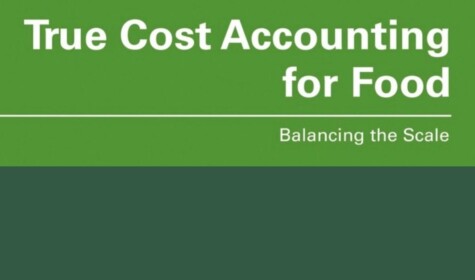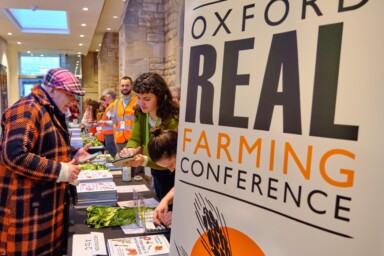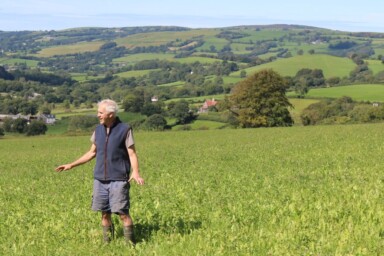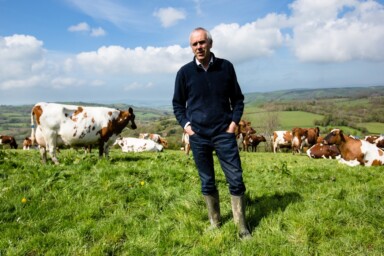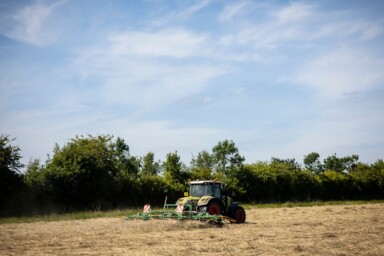As it stands, there is no common way to measure the sustainability of food and farming systems across the world. Not only does this make it hard for farmers and land managers to know the impact of their practices or how they can improve, but it allows the costs of food and farming systems to remain hidden and displaced, as those that pollute or have poor environmental practices are not held financially accountable for the damage caused.
Similarly, it’s difficult for governments to know which food production systems to support, or for food companies to know which producers to source from and consumers to understand what the most sustainable and healthy options are. We believe this is a critical barrier slowing the transition towards sustainable food and farming systems. That is why we’ve developed the Global Farm Metric – a harmonised tool that gives power to farmers, consumers, governments and businesses to make sustainable choices.
This is an excerpt from True Cost Accounting for Food: Balancing the Scale, edited by Barbara Gemmill-Herren, Lauren E. Baker and Paula A. Daniels and recently published by Routledge.
_______________________________________________________________________________
As the harmonisation of the on-farm assessment process evolves, the focus of attention should then move to government and government agencies whose interventions will be essential, if we are to shift the balance of financial advantage away from the present situation where unsustainable farming pays better than its sustainable counterparts, to a system which rewards the delivery of so called ‘public goods’.
It is a truism that unless we do this, the number of individuals who will be able to practice sustainable agriculture will remain confined to the passionate, the idealistic, the entrepreneurial, and their committed consumer (often wealthy) counterpart, who occupy niche markets and/or are prepared to pay more for more sustainable and healthy food.
‘Carrots and Sticks’
Building on a baseline of common data, it will…be possible to develop policy instruments, such as those that fall under the ‘polluter pays principle’, which ensure that in the future, farming practices which deliver environmental and social ‘goods’ are rewarded in proportion to the benefits delivered (‘carrots’), while those that are causing damage become financially accountable for these impacts (‘sticks’).
An example of such a ‘stick’ under the polluter pays headline would be a tax on nitrogen fertiliser. There is a paradox associated with the use of nitrogen: it has become a seemingly essential component of modern agriculture [that] brought enormous increases in productivity and allowed the global population to grow food rapidly. But these benefits come with huge negative impacts including the steady degradation of the natural environment and the soil upon which future food productivity depends. The European Nitrogen Assessment, a major exercise involving over 200 scientists across the European Union, established that the negative impact of the use of nitrogen fertiliser could be valued between €35 and €230 billion in 2011 (Sutton and Van Grinsven, 2015). A nitrogen tax would therefore constitute a bold initiative challenging entrenched behaviour by making users financially accountable for the negative impact it causes, driving down its use in favour of practices that deliver public benefit.
One such benefit, or ‘carrot’, would be the maintenance or building of soil carbon. If farmers were to be paid to build organic matter (a proxy measure for soil carbon) as a result of their management practices, it could potentially transform the economics for sustainable farming and bring multiple environmental benefits (KeySoil, 2015). Soil organic carbon makes up approximately 50% of soil organic matter. Degraded soils retain less moisture and are therefore highly vulnerable to droughts. But for every 1% increase in organic matter in soils, the first foot of soil is able to hold an additional 16,500 gallons of water per acre (40,000 gallons per hectare) (Gould, 2015). Of course, to achieve this, we need to reach agreement on which practices have the potential to build soil carbon, as well as a common metric and the emergence of a reliable and cost-effective means of measuring soil carbon outcomes on farm. If this approach were applied globally, it is estimated that soils (already recognised as the second largest carbon sink after the oceans), would re-sequester significant quantities of the CO2 that have been emitted through the use of fossil fuels over the last 50 years or more.
Until now, governments throughout the world have been reluctant to introduce a polluter pays principle for farming, owing to its possible impact on food prices. This is, of course, a huge issue that must be addressed, yet the failure to do so amounts to environmental vandalism, pollution and irresponsible asset stripping of finite natural capital. It is our job now to provide them with the evidence and toolkits to be able to make this an obvious choice for future policy development.
A Thriving Market for Sustainable Food
Potentially, the most powerful lever in driving food system transformation is the market. Even with corrective policy mechanisms in place, in order for sustainable agriculture to become the default model of choice for farmers all over the world, there must be a thriving and transparent market for the output from such systems, which recognises and rewards the positive benefits being delivered.
It is imperative that the retail sector now makes itself fully aware of the true cost of the food that it sells and must be proactive in demanding food and farming policies that ensure that its supply-chain partners are producing food that is genuinely sustainable from the perspective of the environment, the farmers and the rural community.
To take the example of food – the most obvious output from farming – the Sustainable Food Trust believes that we need a new innovative, harmonised and transparent framework for labelling food products, which draws on the results from an annual sustainability assessment (based on the harmonised framework) and empowers consumers by providing accurate information about the degree of sustainability and provenance of the product. This could take the form of a traffic light system or a sliding scale, but importantly the language, categories and metrics used must be consistent, comparable and easily understood.
Of course, there are now also new and potentially exciting markets for farmers to start tapping into, including those surrounding the delivery of natural capital or carbon offsets. This, together with the recognition that intensive agriculture is a large greenhouse gas emitter, has given rise to the development of a large number of on-farm carbon calculators. [However], unless there is an internationally harmonised framework for measuring farm-level impact under which these schemes and calculators can all fall, there is a huge risk of repeating the ‘siloized’ mistakes made by the certification organisations all those years ago.
Conclusion
If we are to restore the global food system ‘organism’ to full health, we need to work from the top down (with governments and the market), from the bottom up (by empowering the millions of farmers who now straddle the majority of the planet’s land surface), and in the middle (by empowering citizens to vote for the farming systems that they would like to support, through their purchasing powers). It is true that today the patient is sick, but by working within each of these levels, the application of True Cost Accounting can be used to re-establish farming systems that operate within planetary boundaries and produce food in harmony with nature across the globe.
